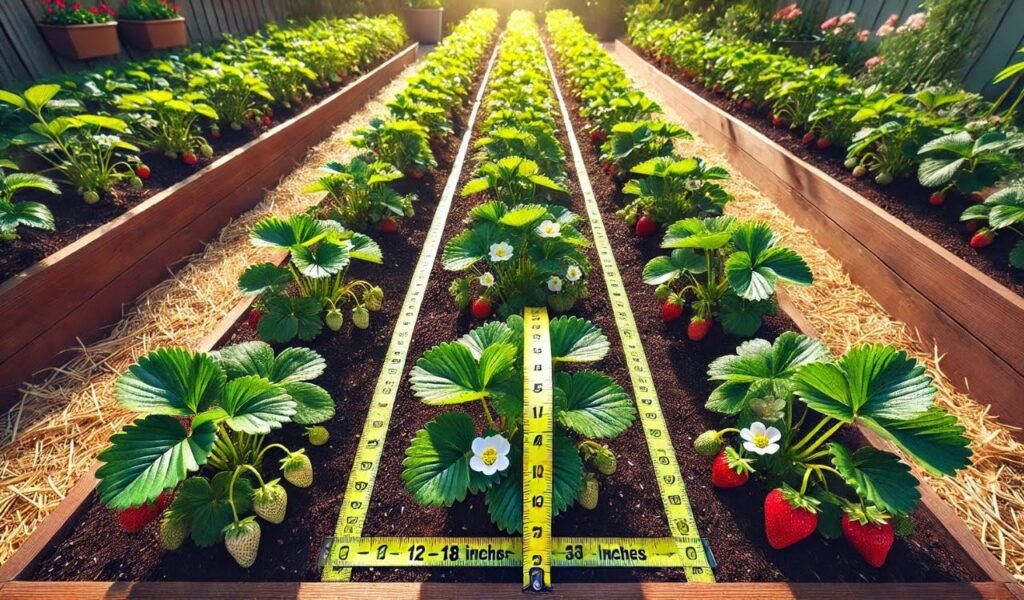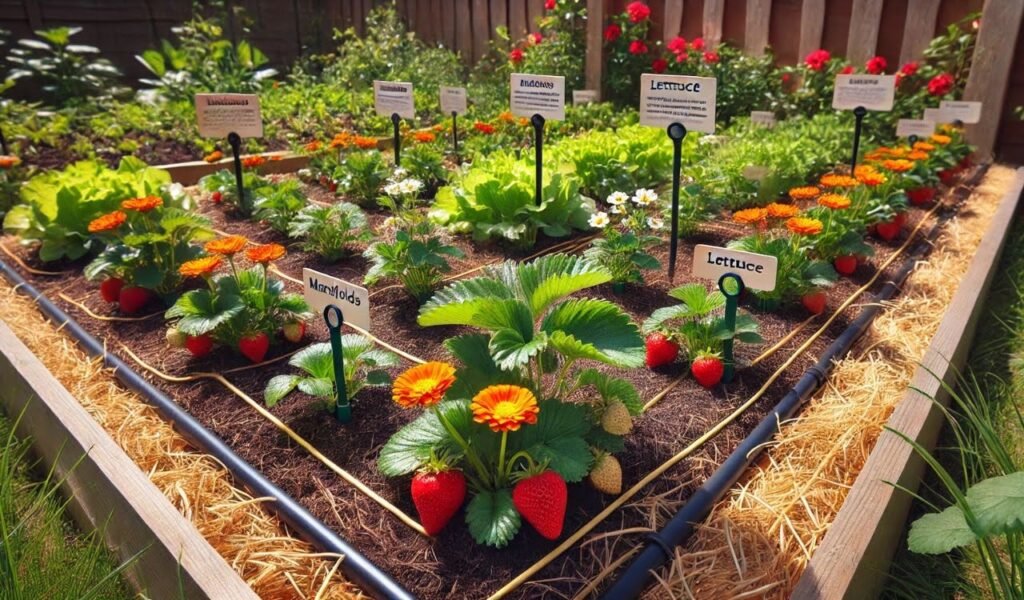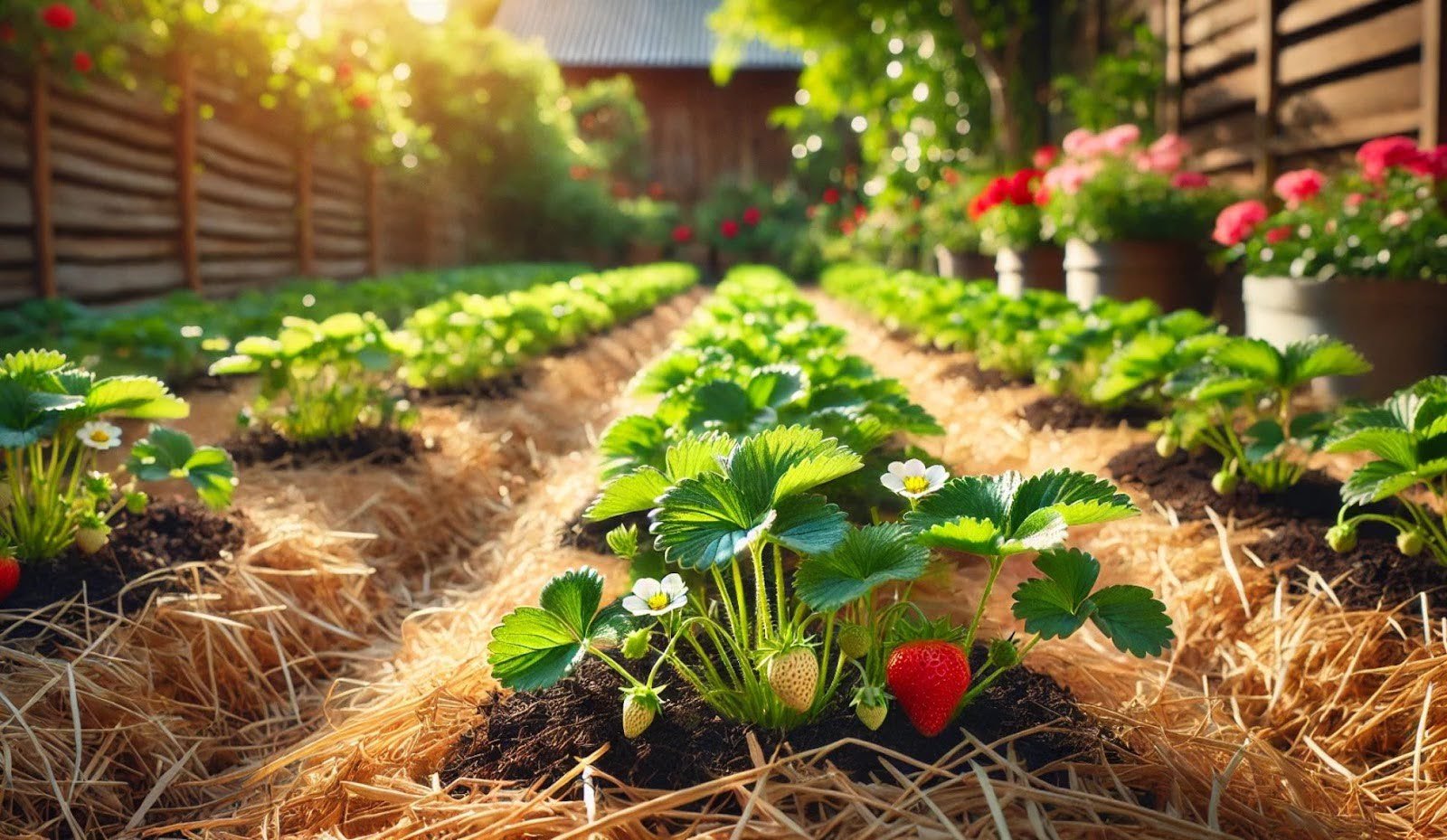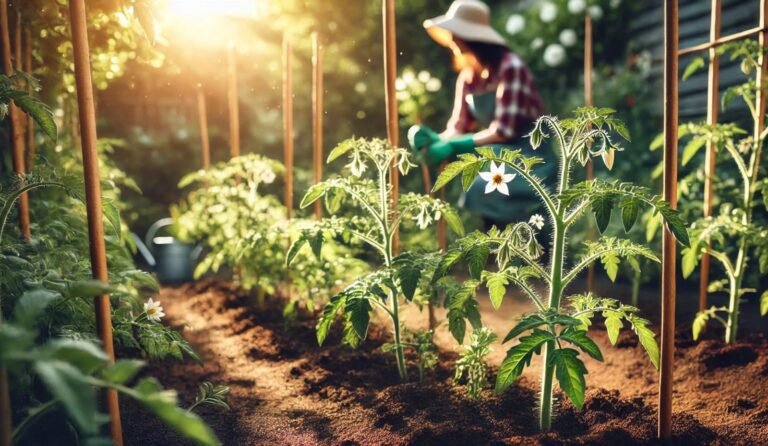How Far Apart to Plant Strawberry Plants for Maximum Yield
How far apart to plant strawberry plants? It’s a simple question, but getting the spacing right can mean the difference between a thriving berry patch and a frustrating flop. Too close, and your plants will battle for space, sunlight, and nutrients.
Too far, and you’re wasting precious garden real estate. Want big, juicy strawberries with minimal hassle? Let’s break down the perfect spacing to help your plants—and your harvest—reach their full potential.
Why Proper Spacing Is Crucial for Strawberry Plants
Understanding the importance of spacing will help you avoid common pitfalls like overcrowding and disease outbreaks. Let’s explore why getting the spacing right matters:
1. Better Air Circulation
When strawberry plants are spaced correctly, air can move freely around them. This reduces moisture buildup, which is a major cause of fungal diseases like gray mold and powdery mildew.
2. Efficient Nutrient and Water Use
Strawberries are heavy feeders, meaning they require plenty of nutrients and water. Overcrowded plants compete for these resources, which can stunt growth and result in smaller, less flavorful berries.
3. Improved Fruit Quality
Well-spaced strawberry plants produce larger, sweeter, and more consistent fruit. Crowded plants often yield smaller, misshapen berries due to resource competition.
4. Ease of Maintenance
Proper spacing makes tasks like weeding, pruning, and harvesting easier. You’ll have more room to move around and tend to your plants without damaging them.
General Guidelines for Strawberry Plant Spacing
Before planting, consider these general guidelines, which apply regardless of the planting method or strawberry variety:
1. Know Your Planting Method
Ground Planting: Offers the most flexibility for spacing. Best for those with ample space.
Raised Beds: Great for better drainage and pest control but may require closer spacing.
Container Gardening: Perfect for patios, balconies, or indoor spaces, with spacing adjusted for confined conditions.
2. Understand Your Strawberry Variety
June-Bearing Strawberries: These plants produce one large crop in late spring or early summer and spread aggressively with runners. They require more space to accommodate their growth.
Everbearing Strawberries: These produce two to three smaller harvests throughout the season and have fewer runners, so they can be spaced closer together.
Day-Neutral Strawberries: Known for producing fruit consistently throughout the growing season, these plants grow compactly and are ideal for small gardens or containers.
3. Consider Your Gardening Goals
If your primary goal is to maximize fruit yield, you’ll need to balance spacing for productivity with ease of maintenance. Those growing strawberries as decorative plants in containers may prioritize aesthetics over yield.
How Far Apart to Plant Strawberry Plants

1. Traditional Row Planting
This method is ideal for ground planting and large garden beds.
Plant Spacing: Place plants 12–18 inches apart within each row.
Row Spacing: Maintain a distance of 3–4 feet between rows to allow for air circulation and easy access for maintenance.
This method works well for gardeners growing a large number of plants, especially June-bearing varieties.
2. Matted Row System
This system allows strawberry runners to grow and fill in the spaces between plants, creating a “mat” of strawberries. It’s commonly used for June-bearing strawberries.
Initial Plant Spacing: Start with plants spaced 18–24 inches apart within rows.
Runner Spacing: Allow runners to fill in the gaps, keeping them 6–9 inches apart.
Row Spacing: Leave at least 4 feet between rows to prevent overcrowding.
This method is perfect for those who want a dense planting with minimal pruning of runners.
3. Hill System
The hill system is ideal for day-neutral and everbearing strawberries. It prevents runners from taking over, focusing the plant’s energy on fruit production.
Plant Spacing: Arrange plants in staggered rows, with each plant spaced 12 inches apart.
Row Spacing: Keep rows 2–3 feet apart for easy maintenance.
This system works well in raised beds and gardens with limited space.
4. Container Gardening
For those with limited outdoor space, containers are an excellent option.
Individual Containers: Use pots at least 12 inches wide and deep per plant.
Large Containers: If using a larger pot or planter box, space plants 10–12 inches apart.
Containers should have good drainage and be filled with high-quality potting mix.
5. Vertical Gardening
For indoor or small-space gardening, vertical setups like wall planters or tiered systems are a great solution.
Spacing in Vertical Systems: Space plants 8–12 inches apart horizontally to ensure adequate room for growth and airflow.
Optimizing Spacing Based on Soil, Climate, and Conditions
Strawberry plant spacing can vary depending on environmental factors and soil conditions. Here’s how to adjust:
1. Soil Quality
Rich, Nutrient-Dense Soil: Plants can be spaced slightly closer together since they’ll have access to ample nutrients.
Poor Soil: Increase spacing to reduce competition for limited nutrients.
2. Climate Considerations
Humid Climates: Wider spacing is essential to improve airflow and reduce the risk of fungal diseases.
Dry Climates: Closer spacing helps conserve soil moisture and shades the soil, preventing evaporation.
3. Sunlight Availability
Strawberries need at least 6–8 hours of direct sunlight daily. In areas with limited sunlight, spacing plants farther apart allows better light penetration.
Tips for Maintaining Proper Spacing Over Time
Even if you plant strawberries correctly, ongoing maintenance is necessary to preserve proper spacing.
1. Prune Runners Regularly
Runners can quickly overcrowd your strawberry patch. Trim them back if you’re not using a matted row system to prevent overcrowding.
2. Use Mulch to Manage Space
Apply a 2–3 inch layer of organic mulch, such as straw or wood chips, between plants. This helps suppress weeds and maintain spacing.
3. Rotate Crops Annually
Avoid planting strawberries in the same location year after year. Crop rotation reduces soil-borne diseases and pest issues.
Advanced Techniques for Strawberry Spacing

1. Companion Planting
Companion planting involves growing strawberries alongside other plants that benefit their growth. Ideal companions include:
Lettuce or Spinach: These low-growing plants don’t compete for nutrients.
Marigolds: Naturally deter pests like nematodes.
Onions and Garlic: Help repel harmful insects.
When companion planting, ensure adequate spacing between strawberries and companion plants.
2. Pest and Disease Management
Proper spacing reduces the likelihood of pests and diseases, but you can enhance protection by:
- Installing drip irrigation to keep foliage dry.
- Using organic sprays to manage aphids and spider mites.
Common Mistakes to Avoid
1. Overcrowding Plants
Overcrowding leads to competition for resources and higher risks of disease. Always follow spacing guidelines for your specific strawberry variety.
2. Ignoring Variety-Specific Needs
Each strawberry type has unique growth habits. For example, June-bearing strawberries need more space than day-neutral varieties due to their vigorous runners.
3. Planting in Poorly Prepared Soil
Even if you space plants correctly, inadequate soil preparation can lead to poor growth. Ensure your soil is well-draining and rich in organic matter.
FAQ
Can strawberries be planted closer in small gardens?
Yes, but maintain a minimum spacing of 12 inches between plants to ensure they have enough resources.
How far apart should strawberries be planted in containers?
For container gardening, space plants 10–12 inches apart in larger pots. Use individual pots for better control.
What happens if strawberries are planted too close?
Overcrowded strawberries are more prone to diseases, pests, and smaller fruit due to competition for nutrients and poor air circulation.
How far apart should strawberry plants be from fences or walls?
Strawberry plants should be placed at least 12–18 inches away from fences or walls. This ensures proper airflow and prevents mold or mildew caused by trapped moisture.
Can I grow strawberries without spacing runners?
Yes, but it depends on the planting system. In a matted row system, runners can grow naturally, spaced 6–9 inches apart. For other methods, pruning runners ensures plants stay productive.
Do different strawberry varieties require different spacing?
Yes! June-bearing varieties need more space (18–24 inches) due to their vigorous runners, while day-neutral and everbearing varieties can be spaced closer (12 inches).
How far apart do you plant strawberries in a hydroponic system?
In hydroponic setups, strawberries are spaced 8–10 inches apart. This ensures proper root growth while maximizing space efficiency in the system.
Conclusion
How far apart to plant strawberry plants is critical for growing healthy, productive strawberry plants. By understanding the specific needs of your chosen variety and planting method, you can optimize spacing for a thriving strawberry garden. Whether you’re planting in the ground, raised beds, containers, or vertically, following these guidelines will ensure sweet success. Start planting today, and enjoy the delicious rewards of your efforts! Happy gardening!







